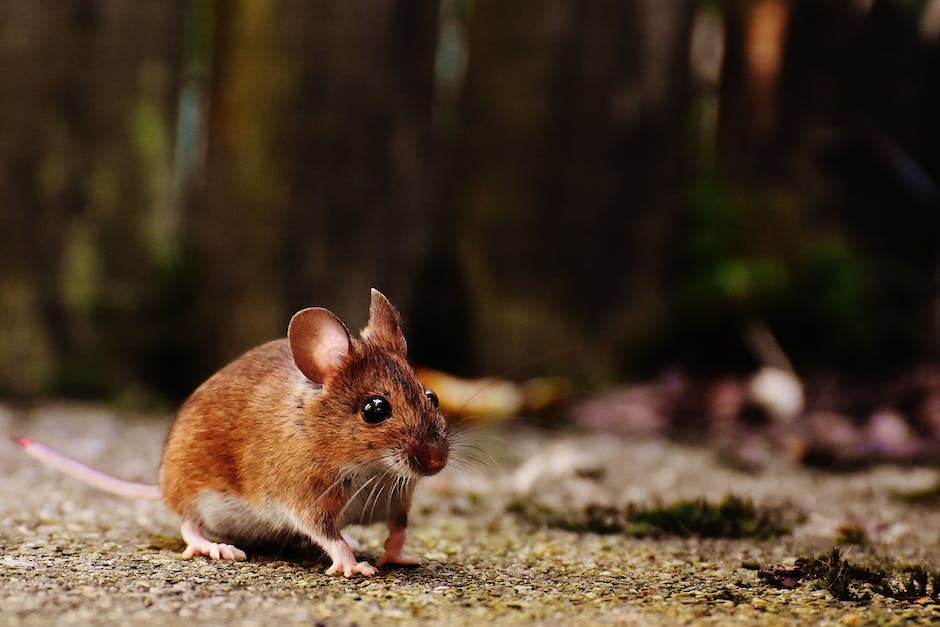Many people are familiar with the pesky little rodents known as rats. What many people don’t know, however, is how to get rid of them. If you have rats in your home, it’s important to take action to seal off their entry points. rats can squeeze through tiny spaces, so it’s important to be thorough in your inspection. common entry points include holes in walls, gaps around doors and windows, and cracks in foundation. Once you’ve located the entry points, seal them off with steel wool, caulk, or hardware cloth.
If you think you have rats, the first step is to do a thorough inspection of your home, both inside and out, to find all of their entry points. Once you have found all of theentry points, you need to block them off so that the rats can no longer get in. This can be done by seal them with steel wool, caulk, wire mesh, or any other material that rats cannot chew through.
Can rats get through sealant?
To keep rodents out effectively, you need to use the right materials. These pests are able to chew through wood, plastic and even some types of sealants, but woven wire mesh is a barrier that they will not be able to penetrate.
Maintaining a clean and sanitary environment is important for preventing the spread of disease and pests. Piles of yard debris can provide hiding places and food sources for pests, so it is important to remove them regularly. Eliminating outdoor food sources, such as pet food or birdfeeders, can also help to reduce the population of pests. Cleaning up fallen fruit or nuts from trees can help to prevent them from attracting pests. storing food in sealed plastic or metal containers can help to keep it fresh and free of contaminants. Finally, it is important to clean up food spills and particles immediately to prevent the growth of bacteria.
How do you close up rat burrows
If you are trying to fill a rat burrow that is currently active, you will want to first stuff the entrance with steel wool or mesh wire. This will help to prevent the rats from getting back in. Once the entrance is blocked, you can fill the hole with soil and dirt. Be sure to stomp it down or tamp it down with a shovel to make sure the rats cannot get back in.
It’s important to take the time to look both low and high when checking for areas that may need to be cleaned or repaired. This includes looking at kitchen cabinets, baseboards, air vents, and near appliances. Additionally, check outside the home, looking for gaps in the foundation, around the garage, and near pipes, gas lines, or electrical wiring.
How do I seal the rat entrance?
If you find any holes in your home, it is important to seal them to prevent rodents from entering. Small holes can be filled with steel wool, and then caulk can be used to keep the steel wool in place. For larger holes, you can use lath screen, lath metal, cement, hardware cloth, or metal sheeting.
There are a few things that rats cannot chew through including thick plastic, glass, metal, some window screens, and door sweeps. This is good to know if you are trying to keep rats out of your home as they will not be able to chew through these materials to get inside.
Can you pour bleach down a rat hole?
Rats are pesky creatures that can be difficult to get rid of. If you find that rats are entering your property, it may be tempting to spray bleach at their exits or entry points. However, this is not advised. Rats are stubborn enough to find another way in and will do even more damage to your property. Bleach can be considered a viable solution, yet it cannot be a permanent one. If you’re looking for a more permanent solution, you may want to consult a professional.
Rats and mice can crawl through very small spaces, which can be destructive to homes. They often make their nests in and around people’s homes and office buildings. Rats and mice can carry germs that make people sick, so it is important to keep them out of your home.
Does steel wool stop rats
If you’re looking for a way to block pests from entering your home, steel wool is a great option. Steel wool is tough but flexible, so it can be easily pushed into cracks and crevices. And pests like rats and mice hate chewing through it because the sharp edges hurt them.
A caulking gun is a great way to seal cracks and small holes in your home. Simply apply the caulk or cement to the crack or hole and then use the gun to seal it shut. Any gap that’s larger than half an inch is big enough for a rat to crawl through, so make sure to seal them up tight! Some examples of materials used for sealing include caulk, cement, sheet metal, door sweeps, pipe collars, wire screens, and steel mesh.
How do I block rat tunnels?
Try to avoid using caulk or plastic or paper to block rat holes; the rats will easily chew through these types of barriers. You can use wire mesh or even chicken wire to block the holes and this will prevent the rats from re-entering the hole.
Rat burrows are usually found underground, and consist of food storage areas and living spaces. There is usually one main entrance and 1 or 2 other entrances which may be less obvious or concealed. These additional exit holes enable the rats to quickly escape if they sense danger. Often, a burrow contains more than one rat.
What size hole can a rat get through
Rats and mice are agile mammals. A mouse can get through a small, 6-7 mm hole (about the diameter of a normal-sized pen) and a rat can get through a 20 mm hole. They can also jump several decimetres at a time.
There are a few different ways to trap animals, but the most humane way is to use a live trap. This type of trap will capture the animal without harming it, which is the best option if you’re worried about children or pets getting hurt. If the infestation is severe, though, you may need to use spring traps or call a professional pest control company.
How do you find where the mouse is entering the house?
If you find any cracks or gaps in your foundation, it’s possible that a mouse could squeeze through. Try to look closely at the area and see if there are any holes that have been made larger over time by water damage or chewing pests. If you find any, seal them up as best as you can to prevent any mice from getting inside.
If you’re looking to keep rats away from your home, one strategy is to use natural deterrents. You can try spreading peppermint oil, cayenne pepper, black pepper, or cloves around the home’s exterior. You can also sprinkle crushed pepper (or spray pepper spray) near rat openings and holes.
Will expanding foam stop rats
Rodents are attracted to expanding foam because it is a soft, malleable material. They will chew through expanding foam alone, so for rodent proofing this must be used in conjunction with wire wool, copper mesh, etc. to create a barrier that rodents can’t penetrate.
Rats can gnaw through concrete and metal, most commonly soft metals such as tin, aluminum, copper, and lead. However, they have been known to gnaw on steel, hard plastics, and concrete walls. If you have a rat problem, it is best to call a pest control professional to get rid of them.
Wrap Up
1. Inspect your home for possible rat entry points. These pests can squeeze through openings as small as half an inch (1.3 centimeters), so be thorough in your inspection. Look for cracks in your foundation, holes in your walls or gaps around your windows and doors.
2. Once you’ve located all the potential entry points, seal them off with steel wool, caulk or another sealant. Pay special attention to any cracks or holes in your foundation, as these are especially vulnerable to rodent activity.
3. You can also take steps to prevent rats from entering your home in the first place by trimming back any trees or shrubs that are close to your house, and keeping your yard clean and free of clutter.
One of the best ways to prevent rats from entering your home is to block off any potential entry points. This can be done by sealing up cracks and holes on the outside of your home with caulk or steel wool. You may also want to install door sweeps and weatherstripping to keep rats from getting in through gaps around doors and windows. If you have a rat problem, taking these steps to seal off entry points can help to control the population and keep your home clean and rat-free.

